Thanks!!
I made a few more tweaks. Screenshots from emulation and a new photo are below. I also tried to make the script more resilient to communication failures (e.g., Kodi exiting and restarting).
Driving a larger display would be tough for SPI, which is where DPI comes in I suppose. Also, should freqData ever become available from Kodi, it may be better to stick with a smaller, monochrome OLED display for its speed. Nevertheless, I’m pretty happy with this approach.
I’ll need to move on to the case next.
Source code is below, in case it’s useful to anyone else. The Python script is independent of Kodi. It requires luma.core and luma.lcd, which implies a fairly recent version of Python 3. Also note that I’m not including the default image files or font files below.
Cheeers,
Matt

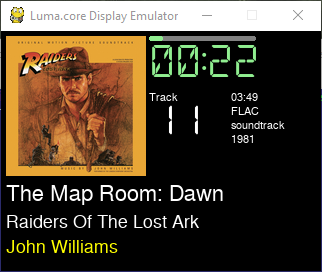
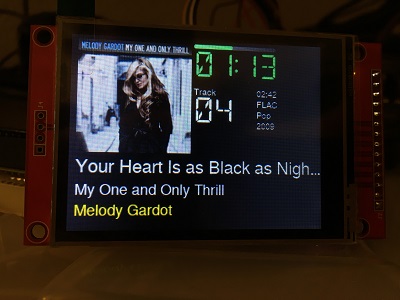
kodi_panel.py
#
# MIT License
#
# Copyright (c) 2020 Matthew Lovell
#
# Permission is hereby granted, free of charge, to any person obtaining a copy
# of this software and associated documentation files (the "Software"), to deal
# in the Software without restriction, including without limitation the rights
# to use, copy, modify, merge, publish, distribute, sublicense, and/or sell
# copies of the Software, and to permit persons to whom the Software is
# furnished to do so, subject to the following conditions:
#
# The above copyright notice and this permission notice shall be included in all
# copies or substantial portions of the Software.
#
# THE SOFTWARE IS PROVIDED "AS IS", WITHOUT WARRANTY OF ANY KIND, EXPRESS OR
# IMPLIED, INCLUDING BUT NOT LIMITED TO THE WARRANTIES OF MERCHANTABILITY,
# FITNESS FOR A PARTICULAR PURPOSE AND NONINFRINGEMENT. IN NO EVENT SHALL THE
# AUTHORS OR COPYRIGHT HOLDERS BE LIABLE FOR ANY CLAIM, DAMAGES OR OTHER
# LIABILITY, WHETHER IN AN ACTION OF CONTRACT, TORT OR OTHERWISE, ARISING FROM,
# OUT OF OR IN CONNECTION WITH THE SOFTWARE OR THE USE OR OTHER DEALINGS IN THE
# SOFTWARE.
from luma.core.interface.serial import spi
from luma.core.render import canvas
from luma.lcd.device import ili9341
from PIL import Image
from PIL import ImageDraw
from PIL import ImageFont
import time
import logging
import requests
import json
import io
base_url = "http://localhost:8080"
rpc_url = base_url + "/jsonrpc"
headers = {'content-type': 'application/json'}
frameSize = (320, 240)
thumb_height = 140;
last_image_path = ""
last_thumb = ""
# Audio/Video codec names
codec_name = {"ac3" : "DD",
"eac3" : "DD",
"dtshd_ma" : "DTS-MA",
"dca" : "DTS",
"truehd" : "DD-HD",
"aac" : "AAC",
"wmapro" : "WMA",
"mp3float" : "MP3",
"flac" : "FLAC",
"BXA" : "BXA",
"alac" : "ALAC",
"vorbis" : "OggV",
"dsd_lsbf_planar": "DSD",
"aac" : "AAC",
"pcm_s16be": "PCM",
"mp2" : "MP2",
"pcm_u8" : "PCM"}
# Handle to ILI9341-driven SPI panel via luma
serial = spi(port=0, device=0, gpio_DC=24, gpio_RST=25)
device = ili9341(serial, active_low=False, width=320, height=240,
framebuffer="full_frame",
bus_speed_hz=32000000)
# Track info fonts
font = ImageFont.truetype("FreeSans.ttf", 22, encoding='unic')
fontB = ImageFont.truetype("FreeSansBold.ttf", 22, encoding='unic')
font_sm = ImageFont.truetype("FreeSans.ttf", 18, encoding='unic')
font_tiny = ImageFont.truetype("FreeSans.ttf", 11)
# Font for time and track
font7S = ImageFont.truetype("DSEG14Classic-Regular.ttf", 32)
font7S_sm = ImageFont.truetype("DSEG14Classic-Regular.ttf", 11)
image = Image.new('RGB', (frameSize), 'black')
draw = ImageDraw.Draw(image)
def truncate_text(pil_draw, xy, text, fill, font):
truncating = 0
new_text = text
t_width, t_height = pil_draw.textsize(new_text, font)
while t_width > (frameSize[0] - 20):
truncating = 1
new_text = new_text[:-1]
t_width, t_height = pil_draw.textsize(new_text, font)
if truncating:
new_text += "\u2026"
pil_draw.text(xy, new_text, fill, font)
def progress_bar(pil_draw, bgcolor, color, x, y, w, h, progress):
pil_draw.ellipse((x+w,y,x+h+w,y+h),fill=bgcolor)
pil_draw.ellipse((x,y,x+h,y+h),fill=bgcolor)
pil_draw.rectangle((x+(h/2),y, x+w+(h/2), y+h),fill=bgcolor)
if(progress<=0):
progress = 0.01
if(progress>1):
progress=1
w = w*progress
pil_draw.ellipse((x+w,y,x+h+w,y+h),fill=color)
pil_draw.ellipse((x,y,x+h,y+h),fill=color)
pil_draw.rectangle((x+(h/2),y, x+w+(h/2), y+h),fill=color)
def update_display():
global last_image_path
global last_thumb
draw.rectangle([(1,1), (frameSize[0]-2,frameSize[1]-2)], 'black', 'black')
payload = {
"jsonrpc": "2.0",
"method" : "Player.GetActivePlayers",
"id" : 3,
}
response = requests.post(rpc_url, data=json.dumps(payload), headers=headers).json()
if len(response['result']) == 0:
# Nothing playing
device.backlight(False)
# draw.text(( 5, 5), "Nothing playing", fill='white', font=font)
last_image_path = ""
last_thumb = ""
elif response['result'][0]['type'] != 'audio':
# Not audio
device.backlight(False)
#draw.text(( 5, 5), "Not audio playing", fill='white', font=font)
last_image_path = ""
last_thumb = ""
else:
# Something's playing!
device.backlight(True)
payload = {
"jsonrpc": "2.0",
"method" : "XBMC.GetInfoLabels",
"params" : {"labels": ["MusicPlayer.Title",
"MusicPlayer.Album",
"MusicPlayer.Artist",
"MusicPlayer.Time",
"MusicPlayer.Duration",
"MusicPlayer.TrackNumber",
"MusicPlayer.Property(Role.Composer)",
"MusicPlayer.Codec",
"MusicPlayer.Year",
"MusicPlayer.Genre",
"MusicPlayer.Cover",
]},
"id" : 4,
}
response = requests.post(rpc_url, data=json.dumps(payload), headers=headers).json()
#print("Response: ", json.dumps(response))
info = response['result']
# progress bar
payload = {
"jsonrpc": "2.0",
"method" : "Player.GetProperties",
"params" : {
"playerid": 0,
"properties" : ["percentage"],
},
"id" : "prog",
}
response = requests.post(rpc_url, data=json.dumps(payload), headers=headers).json()
if 'percentage' in response['result'].keys():
prog = float(response['result']['percentage']) / 100.0
else:
prog = -1;
# retrieve cover image from Kodi, if it exists and needs a refresh
image_set = False
if (info['MusicPlayer.Cover'] != '' and
info['MusicPlayer.Cover'] != 'DefaultAlbumCover.png' and
info['MusicPlayer.Cover'] != 'special://temp/airtunes_album_thumb.jpg'):
image_path = info['MusicPlayer.Cover']
#print("image_path : ", image_path) # debug info
if image_path == last_image_path:
image_set = True
else:
last_image_path = image_path
payload = {
"jsonrpc": "2.0",
"method" : "Files.PrepareDownload",
"params" : {"path": image_path},
"id" : 5,
}
response = requests.post(rpc_url, data=json.dumps(payload), headers=headers).json()
if ('details' in response['result'].keys() and
'path' in response['result']['details'].keys()) :
image_url = base_url + "/" + response['result']['details']['path']
#print("image_url : ", image_url) # debug info
r = requests.get(image_url, stream = True)
# check that the retrieval was successful
if r.status_code == 200:
try:
r.raw.decode_content = True
cover = Image.open(io.BytesIO(r.content))
# resize while maintaining aspect ratio
orig_w, orig_h = cover.size[0], cover.size[1]
shrink = (float(thumb_height)/orig_h)
new_width = int(float(orig_h)*float(shrink))
# just crop if the image turns out to be really wide
if new_width > 140:
thumb = cover.resize((new_width, thumb_height), Image.ANTIALIAS).crop((0,0,140,thumb_height))
else:
thumb = cover.resize((new_width, thumb_height), Image.ANTIALIAS)
last_thumb = thumb
image_set = True
except:
cover = Image.open("kodi_thumb.jpg")
last_thumb = cover
image_set = True
if not image_set:
# default image when no artwork is available
last_image_path = "./kodi_thumb.jpg"
# is Airplay active?
if info['MusicPlayer.Cover'] == 'special://temp/airtunes_album_thumb.jpg':
last_image_path = "./airplay_thumb.png"
cover = Image.open(last_image_path)
last_thumb = cover
image_set = True
if image_set:
image.paste(last_thumb, (5, 5))
# progress bar and elapsed time
if prog != -1:
if info['MusicPlayer.Time'].count(":") == 2:
# longer bar for longer displayed time
progress_bar(draw, 'grey', 'lightgreen', 148, 5, 162, 4, prog)
else:
progress_bar(draw, 'grey', 'lightgreen', 148, 5, 102, 4, prog)
draw.text(( 148, 14), info['MusicPlayer.Time'], fill='lightgreen', font=font7S)
# track number
if info['MusicPlayer.TrackNumber'] != "":
draw.text(( 148, 60), "Track", fill='white', font=font_tiny)
draw.text(( 148, 73), info['MusicPlayer.TrackNumber'], fill='white', font=font7S)
# track title
truncate_text(draw, (5, 150), info['MusicPlayer.Title'], fill='white', font=font)
# other track information
truncate_text(draw, (5, 180), info['MusicPlayer.Album'], fill='white', font=font_sm)
if info['MusicPlayer.Artist'] != "":
truncate_text(draw, (5, 205), info['MusicPlayer.Artist'], fill='yellow', font=font_sm)
elif info['MusicPlayer.Property(Role.Composer)'] != "":
truncate_text(draw, (5, 205), "(" + info['MusicPlayer.Property(Role.Composer)'] + ")", fill='yellow', font=font_sm)
# audio info
codec = info['MusicPlayer.Codec']
if info['MusicPlayer.Duration'] != "":
draw.text(( 230, 60), info['MusicPlayer.Duration'], font=font_tiny)
if codec in codec_name.keys():
draw.text(( 230, 74), codec_name[codec], font=font_tiny)
if info['MusicPlayer.Genre'] != "":
draw.text(( 230, 88), info['MusicPlayer.Genre'][:15], font=font_tiny)
if info['MusicPlayer.Year'] != "":
draw.text(( 230, 102), info['MusicPlayer.Year'], font=font_tiny)
# Output to OLED/LCD display
device.display(image)
def main():
print("Hello, world")
device.backlight(False)
# Turn down verbosity from http connections
logging.basicConfig()
logging.getLogger("urllib3").setLevel(logging.WARNING)
while True:
while True:
# first ensure Kodi is up and accessible
payload = {
"jsonrpc": "2.0",
"method" : "JSONRPC.Ping",
"id" : 2,
}
try:
response = requests.post(rpc_url, data=json.dumps(payload), headers=headers).json()
if response['result'] != 'pong':
print("Kodi not available via HTTP-transported JSON-RPC. Waiting...")
time.sleep(5)
else:
break
except:
time.sleep(5)
pass
print("Entering display loop.")
while True:
try:
update_display()
except (ConnectionRefusedError,
requests.exceptions.ConnectionError):
print("Communication disrupted.")
break
time.sleep(0.9)
if __name__ == "__main__":
try:
main()
except KeyboardInterrupt:
pass
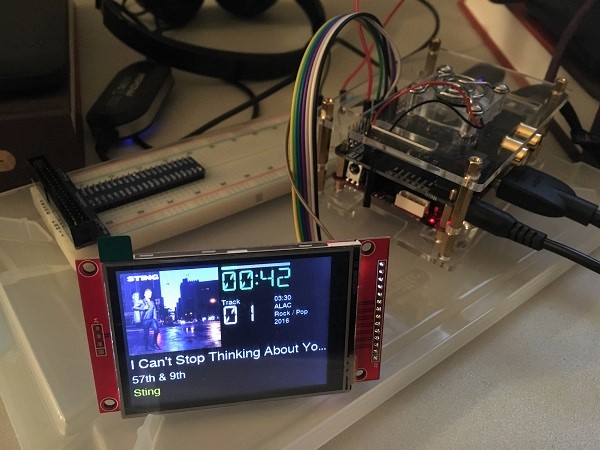

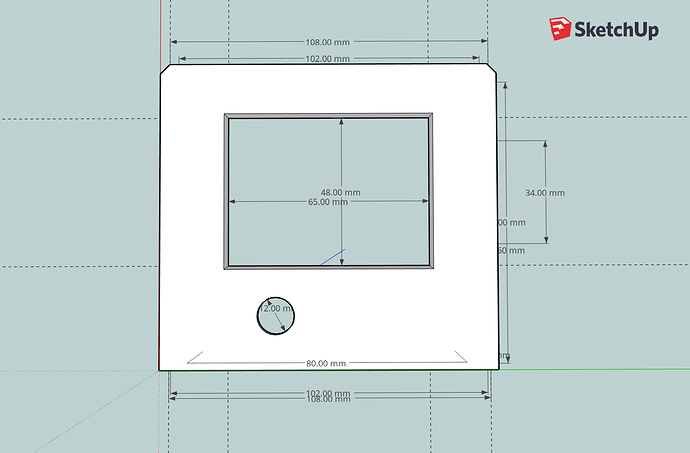
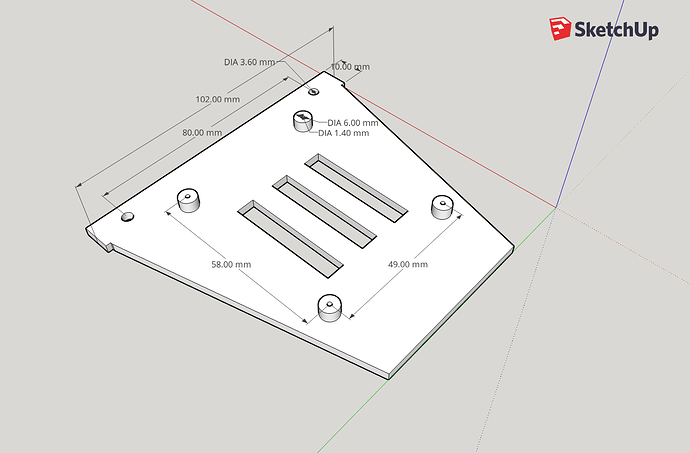
 good progress, thanks for keeping us updated.
good progress, thanks for keeping us updated.

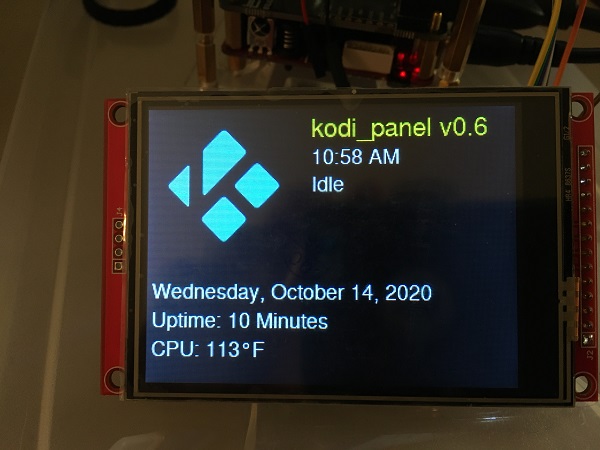
 I wonder if one of them would still be available for use even after connecting the HyperPixel.
I wonder if one of them would still be available for use even after connecting the HyperPixel.